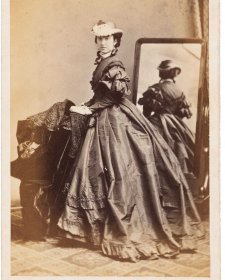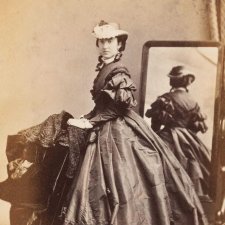Sir John Young (1807–1876) was governor of New South Wales between 1861 and 1867. The son of an East India Company director, Young was born in India and educated at Eton and Oxford before being elected to the House of Commons in 1831. He was secretary for Ireland between 1852 and 1855 and after leaving parliament served as lord high commissioner for the Ionian Islands. Appointed New South Wales governor in early 1861, he took up office in Sydney in May and was almost immediately embroiled in a crisis wherein he approved the appointment of twenty-one new Legislative Council members in an attempt to facilitate the passage of the Crown Lands Acts – legislation which rankled squatters and conservatives. Though censured occasionally for his supposed interference in colonial political matters, Young was liked for his ‘suavity of manner in private life’ and for ‘the zeal with which he aided all objects to ameliorate the condition of the poor, extend the cause of religion, and promote every movement tending to the well-being of the colonists’ through his support of bodies such as the Sydney Ragged Schools, the Sydney Female Refuge Society and the House of the Good Shepherd. He and his wife left Sydney at the end of 1867. In 1869 he was appointed governor-general of Canada but had retired in ill-health by 1872. The New South Wales town of Lambing Flat was re-named Young in his honour in 1863.
Brothers William (1809–1895) and James Freeman (1814–1870) emigrated to New South Wales in 1853 and 1854 respectively, having become involved in photography in England soon after the invention of the daguerreotype. In Sydney they were initially in business with John Wheeler before branching out on their own in 1855. In March that year they announced that their revamped studio was ‘the most perfect room in the colony’ for photography, boasting a 45 square-metre skylight and a ‘separate dressing compartment for ladies’. The brothers began offering cartes de visite in 1862 and subsequently produced thousands of portraits in the format. In the late 1860s they opened a new premises on Castlereagh Street which included an outdoor gallery for taking ‘Equestrian Portraits, Groups, Horses, Dogs and Cats’. Having briefly returned to England – where James Freeman died – William came back to Sydney and continued the business, operating from several George Street locations. He won first prize for his photographs at the Centennial Exhibition in Melbourne in 1888, after which he retired to Goulburn and then Newcastle.
Collection: National Portrait Gallery
Purchased 2015



On one level The Companion talks about the most famous and frontline Australians, but on another it tells us about ourselves.



Drawn from the NPG’s burgeoning collection of cartes de visite, Carte-o-mania! celebrates the wit, style and substance of the pocket-sized portraits that were taken and collected like crazy in post-goldrush Australia.



Visit us, learn with us, support us or work with us! Here’s a range of information about planning your visit, our history and more!